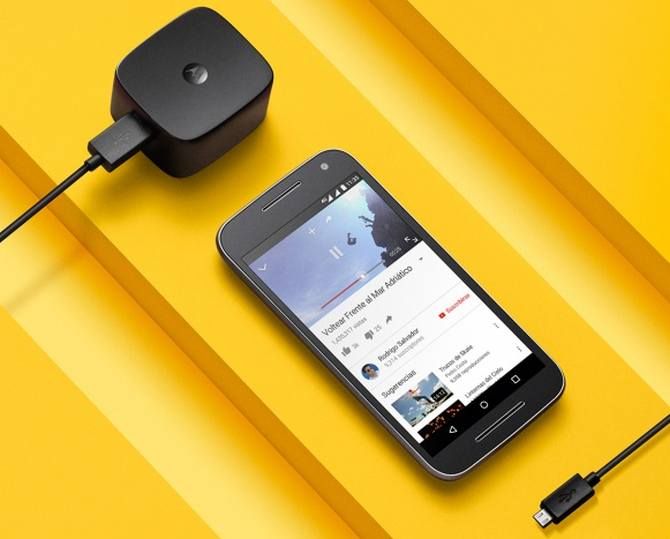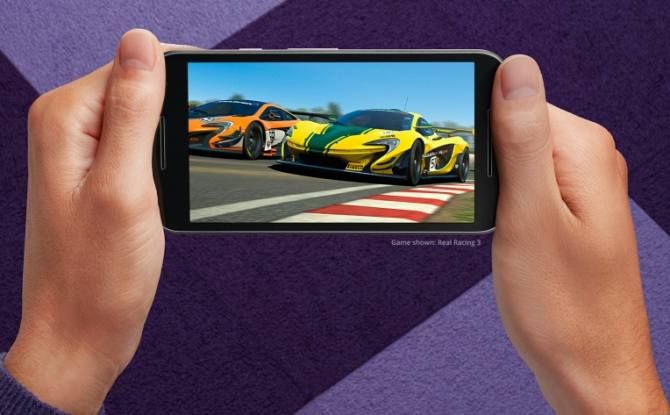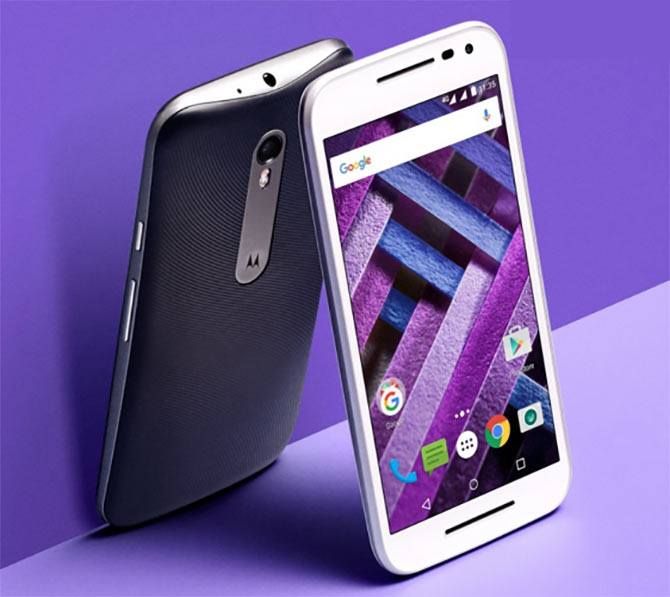Except the battery that charges faster, the Moto G Turbo, at Rs 14,500, doesn't make up for a compelling upgrade, if you already own a Moto G device, says Himanshu Juenja

Motorola has come back strongly after change of guards at the top level. In it's second innings, it has introduced some very impressive handsets, and made people change the way they analysed and placed a price tag on quality hardware.
Motorola enjoyed a position of reckoning in India following the launch of the Moto G series, but the past few months has seen the competition hotting up thanks to more Chinese handset manufacturers jumping in the fray.
In a bid to hold onto its position and market share, Motorola has introduced an upgraded Moto G 3 handset with better specs and turbo charging. Let us take a close look at yet another Motorola mobile phone.
Build
Viewers can be forgiven if they get a bit puzzled by looking at the Moto G Turbo. It looks exactly the same as Moto G 3, save for the rear panel. The dimensions are exactly the same.
For the record, the phone measures 142.1 x 72.4 x 11.6 mm. Same goes for the 155 gms of weight as well. It was disappointing that Motorola crucially skimped out on the dual speaker setup again. Only the lower grille allows for sound output.
The rear panel though witnesses swirls to the ribbed structure instead of the skewed ones. No distinct advantage here when compared, apart from novelty factor. The aesthetics are kept in place with the familiar metal column again, and the convenient Motorola dimple also makes its appearance.

The panel also has a neat trick up its sleeves here, as it provides dust protection in addition to Moto G3's water resistance. Thanks to the rubber inserts, Moto G Turbo gets IP67 certification.
As for the button placements, the top side of the phone carries the 3.5 mm audio jack. The right edge carries the power key as well as the volume rocker. The bottom edge plays host to the Micro USB port.
Display
As Motorola decided against a full HD screen on the Moto G Turbo, it was another disappointment carried over from Moto G3's spec sheet. The 5-inch screen with 720 x 1280p display, and 294 ppi pixel density surely won't be disturbing Motorola too much with supply orders.
The screen won't win too many brownie points, as it is decent at best, but the users will not be disappointed if they don't plan on viewing the otherwise crisp screen from sharp angles. The Corning Gorilla Glass 3 provides some good protection here.
Overall, the screen is satisfactory as one will have to really squint hard to find any pixelation.
Hardware
Finally an area where Moto G Turbo gets something fresh. The handset has been supplied with a Snapdragon 615 chipset, which trumps the 410 of Moto G 3. The Adreno 405 GPU is also an upgrade, and along with the Quad core CPU of Cortex A53 (1.5 GHz) and another quad-core Cortex A53 (1.0 GHz) the users can definitely expect better performance.
Supplying 2 GB of RAM as standard is good to see. The phone comes with 16 GB of internal storage memory, and users get to enhance that by another 32 GB via micro SD card.
Connectivity
Since it is similar to the already beefed up Moto G3, the turbo edition also flaunts support for technologies like 4G, Wi-Fi and Bluetooth (ver 4.0). It is a dual SIM mobile phone as well.
It was heartening to see that there is 4G support for both the SIM cards. Users get AGPS and GLONASS for navigational assistance. Motorola also has given the importance to FM radio option, and included it for the music lovers.
Software
Providing a near stock android version has made life easier for Motorola. The less tinkering of the OS also ensure fewer issues will mar user experience.
Customers will particularly be getting the fine taste of the OS being offered here. The phone comes running on the Android OS (ver 5.1.1) and customers can expect the upgrade to Marshmallow soon next year. Motorola does add some of its own unique features, and Moto Display largely stands out, lighting up only the relevant portions of the screen whenever a notification arrives, or when the phone is picked up.
Quick Capture allows the users to launch the camera app by giving a double twist of the wrist action.
Similarly, the torch can be activated by making a chopping gesture. Moto Migrate allows for a hassle free migration from an older handset to your latest mobile phone, where the data is exported in a jiffy.
The user experience is lag free and customers can expect near Nexus like experience once again on a Motorola mobile phone.
Performance

The near stock OS, and bumped up hardware specifications meant that the user experience was butter smooth. The transition effects and app interactions went without any hiccups. The games too showed better response and Asphalt 8 ran without frame issues. There was a hint of increased warmth though, but nothing really to raise a concern.
The lack of dual speaker set up was reminded here. The single speaker was loud and good enough to make up for a decent experience.
Camera
Staying true to Moto G 3's DNA, the turbo edition too has the same 13 MP camera along with the dual tone LED flash. The front camera is a 5 MP unit.
There are some good number of modes included, like the HDR, Slow motion, Widescreen, Geo Tagging, and of course the Panorama. The camera output again is not going to take the crown for the given segment, but surely is far from disappointing.
The pictures taken in broad daylight came out pretty decent and packed ample details. Low light photography in fact exceeded expectations and although there was presence of grains, the camera here should save users the embarrassments if used smartly.
The videos can be shot in upto 1080p resolution at 30 fps. The rear camera can bring up 4x worth of digital zoom and results here too were very good. The videos were clear and carried good amount of detail again.
The front camera does a fairly good job of capturing the selfies. The results were more than passable and can be shared around confidently.
Surely, the users will not feel shortchanged here, especially considering the price paid for the handset.
Battery
The one area where the Moto G Turbo wins accolades easily. The 'Turbo' in the phone's name stands for the turbo charging support which it carries. The 2470 mAh battery pack is again the same as that of Moto G 3, but provides better back up, and gets charged much faster.
Users can enjoy about six hours worth of backup after charging the device for just fifteen minutes, and can attain 50 per cent of charged battery in about 30 minutes.
For moderate to high usage pattern, the phone lasts for just about a day. It was good to see the turbo charger being supplied in the box, but unfortunately the cable is non removable. User will be forced to purchase a data transfer cable separately.
Verdict

In the end, Moto G Turbo is good phone. Lacking a dual speaker set up and full HD display were major disappointments.
But make no mistake, the Moto G Turbo is very much the option to go for if one is not already an owner of a Moto G 3. It is just that Moto G Turbo doesn't make up for a compelling case for an upgrade. If one is looking for a better camera experience, the Lenovo P1 is not out of reach either.
The pricing is right, but this will also mean either the Moto G 3 gets a price cut, or the Moto G line up vanishes entirely. With Moto X Play in the fray as well, Motorola may have some tricky decision to make.
Photographs: Courtesy, motorola.in











 © 2025
© 2025